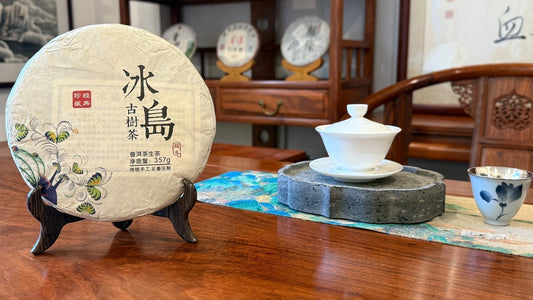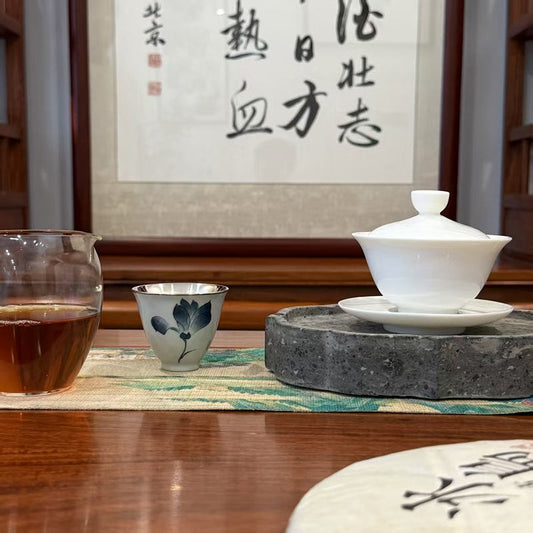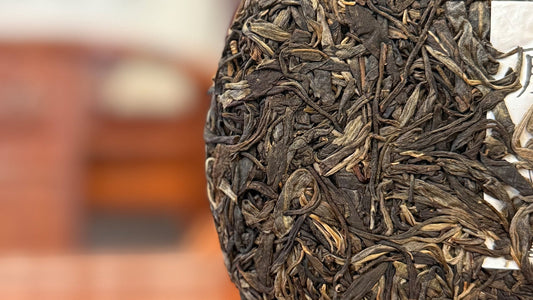Oolong Tea Flavor: Unique & Complex Taste Profiles Explained
Terroir is crucial to all Chinese teas; it is the “land” that imparts unique life to the tea leaves. However, the charm of oolong tea’s flavor goes far beyond terroir alone.
Its uniqueness is deeply rooted in tradition and craftsmanship: it not only depends on tea plant varieties and the environment but also relies heavily on the highly sophisticated artistry of tea processing.

There is a saying in the industry: “Only oolong tea truly has masters.” This is not an exaggeration. Making oolong tea not only requires high-quality fresh leaves like other teas, but more importantly, it must go through complex and meticulous traditional processes — such as shaking, oxidation manipulation, and roasting — to reveal its proper aroma layers and flavor complexity.
Therefore, oolong tea is not just a gift of nature but a condensation of culture and craftsmanship, which is the true source of the diverse flavor profiles of Chinese oolong tea.
For a systematic understanding of oolong tea’s origins, pricing, and related information, please read our
Chinese Oolong Tea: The Ultimate Guide to China’s Legendary Brew.
Oxidation Levels Create Distinct Oolong Tea Flavors

The reason oolong tea (Wulong) can showcase complex and varied flavor layers lies in its unique oxidation range, typicall between 15% and 80%.
As a “semi-oxidized” tea between green and black teas, the broad oxidation spectrum gives oolong tea vast potential for flavor variation and makes it the most expressive among the six major tea categories.
- At low oxidation levels, oolong retains the freshness and vegetal notes of green tea.
- At high oxidation levels, it displays the rich, mellow, and sweet flavors similar to black tea.
- Moreover, the intermediate oxidation levels generate a rich diversity of flavor profiles, with nearly every oxidation percentage representing a whole new style.
The founder of the Chinese Tea Group once vividly said during our tea master training:
“Imagine you have a cup of rich black tea and a cup of fresh green tea mixed at 15%, 16%, 17% oxidation levels— even the slightest change causes subtle flavor differences.”
Of course, oolong tea is not simply a mixture of green and black tea. It is not a mere numbers game but a flavor revolution accurate to percentage points. Through precise control of oxidation levels, oolong tea balances freshness and mellowness, becoming the most “harmonious” representative among Chinese teas.
The Flavor Revolution in Roasting Oolong Tea

After achieving the desired oxidation, roasting becomes the critical step shaping oolong tea’s flavor evolution. Oxidation transforms polyphenols in the leaves, creating floral and fruity or ripe fruit aromas, while roasting further sculpts oolong tea’s unique aroma layers and flavor structure.
Roasting intensity and duration significantly influence aroma and taste:
- Light roasting preserves fresh floral and fruity notes, producing a refreshing, sweet, and mellow brew.
- Deeper roasting evaporates moisture, causing caramelization reactions that yield richer roasted, honeyed, or caramel aromas, resulting in a fuller, rounder cup with lasting sweetness.
Roasting time is decisive:
- Short light roasting maximizes fresh and vibrant original tea notes.
- Longer, medium-to-heavy roasting suits those who enjoy stronger aromas and richer mouthfeel.
Choosing roasting intensity and time is not simply drying — it is a flavor revolution.
Oolong Tea Flavor: A Three-Dimensional Control

Imagine oolong tea flavor is born in a highly flexible and rich “control space.” The tea undergoes varied oxidation levels, combined with different roasting intensities and durations.
If we treat oxidation level, roasting intensity, and roasting time each on a scale from 1 to 10:
- Oxidation 1 means very light oxidation. 10 is nearly fully oxidized.
- Roasting intensity 1 is very light roasting. 10 is heavy roasting.
- Roasting time 1 is very short. 10 is prolonged deep roasting.
These three dimensions combine to create the diverse flavor profiles of oolong tea. For example:
- Light oxidation + light roasting + short roasting time yields a fresh, floral, fruity brew.
- Heavy oxidation + heavy roasting + long roasting time produces rich roasted aromas, mellow mouthfeel, strong sweetness, and lasting finish.
With variations in weather, seasonal leaf conditions, and timing from picking to oxidation, master tea makers use their rich experience and superb skill to complete this delicate flavor control.
The Regional Roots of Oolong Tea Flavor

We previously detailed China’s four core oolong tea regions and their natural and cultural backgrounds in Top Regions & Origins of Chinese Oolong Tea Leaves.
These regions respectively gave birth to Wuyi Rock Oolong’s “dark chocolate of tea,” Anxi Tieguanyin’s “champagne of tea,” Phoenix Dancong’s “oriental perfume matrix,” and Taiwan High Mountain Oolong’s “Chardonnay of tea.” You will find that most famous oolong teas are named after their place of origin, because the root of flavor lies in the land.
From geography to processing artistry, from oxidation level to roasting techniques, these key factors jointly shape the rich, layered flavor of Chinese oolong tea. It is not just a tea but a taste art combining “nature’s breath” and “artisan’s heart,” satisfying tea lovers worldwide in both flavor and culture.
Please visit our Chinese Oolong Tea Collection to explore each oolong tea’s origin, brewing tips, and purchase options.
For deeper knowledge of oolong tea’s history, varieties, and culture, read our Chinese Oolong Tea: The Ultimate Guide to China’s Legendary Brew.
Related Articles You Might Like
- Oolong Tea Price & Cost: 6 Key Factors You Should Know
- Loose Leaf Oolong Tea: Shape Classification Explained
- Where to Buy Oolong Tea Online – Traditional Chinese Tea House





